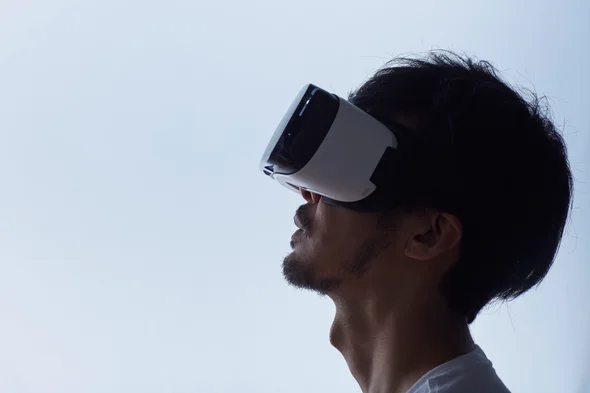The Limits of Virtual Reality in Mental Health Treatment
4 min read
If you are a mental health professional who is interested in using virtual reality in your practice, you may want to keep some of these issues in mind. These include the limits of VR in mental health treatment and the potential use of VR-assisted therapy for anxiety disorders.
VR-based CBT can be effective in the treatment of SAD
CBT with VR-based exposure has been shown to be effective in the treatment of social anxiety disorder (SAD) and has a high cost-benefit ratio. Patients are treated through virtual environments that mimic real-world social situations. In addition, this type of therapy allows patients to learn how to control the situational elements that cause their anxiety.
The current study is designed to develop a complete CBT program that incorporates VR-based exposure. It will involve a three-arm randomized controlled trial, with patients being randomly assigned to one of three groups.
Participants are invited to participate in the study via a video call. They are also asked to sign an informed consent statement. Study participants are required to understand the Danish language. Their diagnoses will be discussed at a weekly clinical conference. This study will be the first Danish SAD treatment program to use VR technology.
To ensure that the study is a legitimate research experiment, all participants must meet certain criteria. For example, they must not have psychosis. They must be able to comprehend written information and have no severe cyber-sickness.
VR-assisted therapy is effective for anxiety disorders
Virtual Reality Assisted Therapy (VR ART) is a type of therapy that has been shown to improve symptoms of anxiety and other mental health conditions. It enables therapists to simulate psychological difficulties and to provide patients with the opportunity to practice coping skills.
The most common use of VR in therapy is for treating phobias. For example, a person with a fear of flying can experience the feeling of flying in a virtual airplane.
Another application is exposure therapy. In exposure therapy, a patient is confronted with the anxiety-inducing stimuli of a traumatic event. Although it is considered effective, it remains underused due to logistical and financial barriers.
Another example is Virtual Reality Exposure Therapy (VRET). VRET is a promising treatment for anxiety disorders. However, data on its efficacy is still emerging.
A recent study investigated the effects of VR on adolescents with psychosis. Results were encouraging. They showed that participants found the experience to be acceptable.
VR systems may become an innovative clinical tool for specific psychiatric symptoms
The use of virtual reality (VR) systems for mental health is gaining traction. A few studies have shown that it can effectively reduce anxiety and other symptoms. However, some concerns have emerged regarding the privacy and ethical implications of simulated environments.
Several early studies used VR to simulate various phobias, including spider phobia, fear of heights and claustrophobia. This technology is now being applied to treat a variety of other psychological disorders.
As a result of these technological advancements, clinicians are now able to evaluate patients in a more controlled environment. They can also customize treatment plans to address specific concerns.
The most exciting development in clinical VR is the automated VR exposure therapy applications. These tools allow clinicians to safely confront clients with anxiety-inducing stimuli in a virtual environment. Among other features, the systems can adaptively change the phobic environment to match a client’s preferences.
Despite these innovations, some concerns remain about data sharing and the privacy of patient information. However, these are minor compared to the potential benefits of a more personalized treatment approach.
Limitations of VR in mental health treatment
The use of virtual reality (VR) in mental health treatment has become more widespread in recent years. It provides patients with an opportunity to engage in psychotherapy or training in a virtual environment. Some VR systems create highly immersive experiences. However, not everyone is capable of using these devices.
In some cases, VR can cause a condition called VR sickness, which results in nausea, vomiting, or vertigo. These symptoms typically occur after a patient spends about 30 minutes in the virtual world.
However, the effects of VR may be mitigated by therapists who use the technology. Those who suffer from PTSD, phobias, or chronic pain are potential candidates for VR therapy.
Several studies have shown that patients who undergo VR exposure therapy experience less pain, anxiety, and depression. Additionally, the virtual environments can reduce arousal and reduce social and cognitive distractions.
Many digital health companies are developing prototypes of virtual therapy programs. These include Psious, a program that helps patients through their mental health conditions with a licensed psychotherapist.








